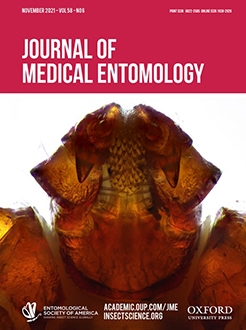Human granulocytic anaplasmosis (HGA) and human babesiosis are tick-borne diseases spread by the blacklegged tick (Ixodes scapularis Say, Acari: Ixodidae) and are the result of infection with Anaplasma phagocytophilum and Babesia microti, respectively. In NewYork State (NYS), incidence rates of these diseases increased concordantly until around 2013, when rates of HGA began to increase more rapidly than human babesiosis, and the spatial extent of the diseases diverged. Surveillance data of tick-borne pathogens (2007 to 2018) and reported human cases of HGA (n = 4,297) and human babesiosis (n = 2,986) (2013–2018) from the NewYork State Department of Health (NYSDOH) showed a positive association between the presence/temporal emergence of each pathogen and rates of disease in surrounding areas. Incidence rates of HGA were higher than human babesiosis among White and non-Hispanic/non-Latino individuals, as well as all age and sex groups. Human babesiosis exhibited higher rates among non-White individuals. Climate, weather, and landscape data were used to build a spatially weighted zero-inflated negative binomial (ZINB) model to examine and compare associations between the environment and rates of HGA and human babesiosis. HGA and human babesiosis ZINB models indicated similar associations with forest cover, forest land cover change, and winter minimum temperature; and differing associations with elevation, urban land cover change, and winter precipitation. These results indicate that tick-borne disease ecology varies between pathogens spread by I. scapularis.
BioOne.org will be down briefly for maintenance on 14 May 2025 between 18:00-22:00 Pacific Time US. We apologize for any inconvenience.
How to translate text using browser tools
21 July 2021
A Comparative Spatial and Climate Analysis of Human Granulocytic Anaplasmosis and Human Babesiosis in New York State (2013–2018)
Collin O'Connor,
Melissa A. Prusinski,
Shiguo Jiang,
Alexis Russell,
Jennifer White,
Richard Falco,
John Kokas,
Vanessa Vinci,
Wayne Gall,
Keith Tober,
Jamie Haight,
JoAnne Oliver,
Lisa Meehan,
Lee Ann Sporn,
Dustin Brisson,
P. Bryon Backenson
ACCESS THE FULL ARTICLE
It is not available for individual sale.
This article is only available to subscribers.
It is not available for individual sale.
It is not available for individual sale.

Journal of Medical Entomology
Vol. 58 • No. 6
November 2021
Vol. 58 • No. 6
November 2021
anaplasmosis
babesiosis
Climate
landscape
zero-inflated negative binomial regression model





